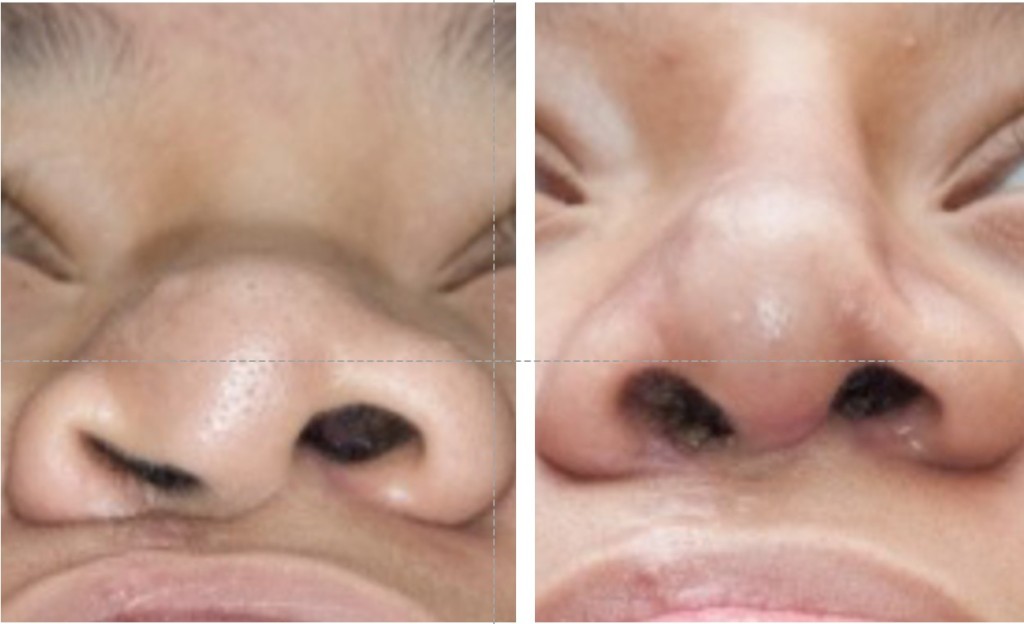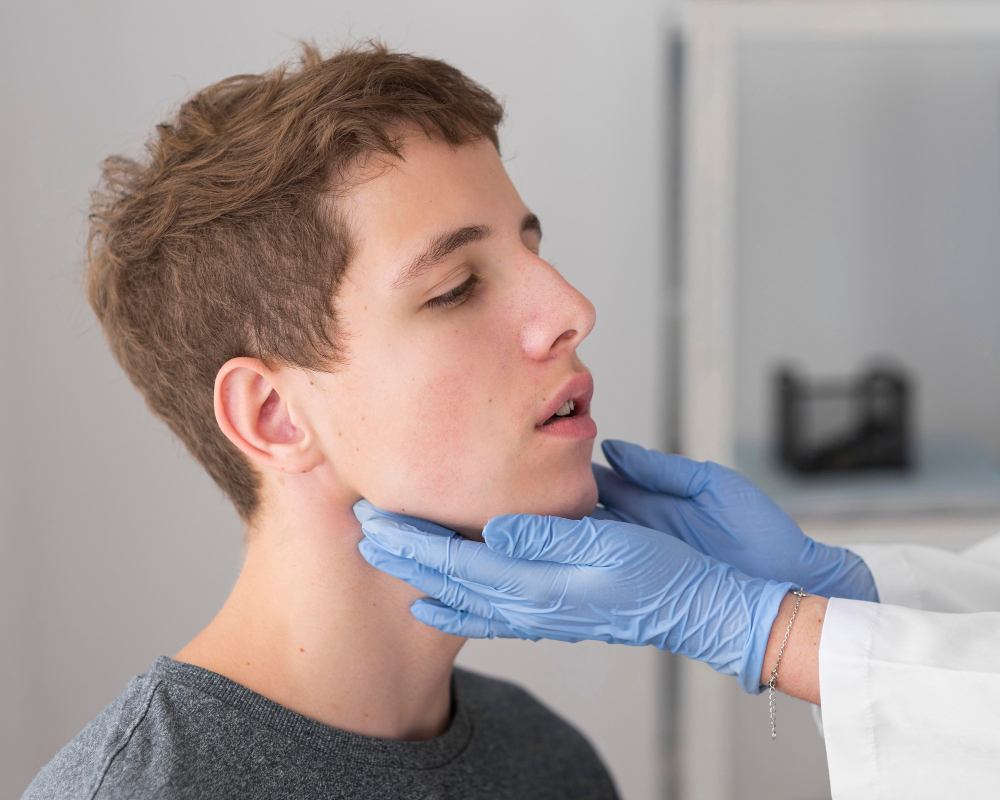Rhinoplasty, commonly termed a nose job, is a reconstructive procedure carried out to recontour the nose for aesthetic or functional reasons. Though most people associate rhinoplasty with adults seeking cosmetological improvements, it can be quite crucial in treating nasal abnormalities from birth in children. Such deformities are likely to interfere with the child’s breathing, facial aesthetics, and self-confidence. Parents can get the best medical expertise and specific surgeries in Toronto that will help their child to have a better nasality and look. This blog has unfolded the possibilities of rhinoplasty in correcting congenital anomalies of the nose in children with insider information about the elements of development, timing, kinds of anomalies, and the advantages of surgical intervention.
How Does a Child’s Nose Develop Over Time?
The nose of the child goes through a lot of changes from birth till adolescence. The nasal structures at birth are still developing, and the soft tissues are softer, so early intervention is beneficial for some conditions. Facial bones and cartilage of children continue growing and developing; girls reach full maturity between ages 15 and 17, and males between ages 17 and 19. Thus, understanding these developmental stages is crucial in determining the right intervention stage for any surgical procedure on the nose.
In contrast, the early childhood nasal structures are more forgiving and plastic. They can, therefore, afford surgical correction with much less chance of complications. As growth continues, the nasal bones become less pliable, and any surgical changes to be made must take into account active growth that would interfere with a permanent outcome. Pediatric rhinoplasty, therefore, becomes a delicate balancing act between correcting deformities without interfering with the natural growth of these nasal structures.
When Is the Best Age for Children to Have a Nose Job?
The optimal time to perform rhinoplasty in children varies based on different factors, such as the type and severity of nasal abnormality, general health status, and potential ramifications related to quality of life following the procedure. Most surgeons would wait for the nasal structures to be mature enough to provide stable and long-lasting results. This is usually possible when the child reaches 7 to 8 years of age, though the more complicated cases may necessitate surgical intervention during adolescence.
In serious breathing abnormalities causing recurrent sinus infections, surgery may be necessary at an early stage. For instance, severe deviations or nasal airway obstruction could be corrected in the surgical intervention before such a child would need to endure major health-related problems. Cosmetic cases demand thorough psychological preparation of the child and comprehension of the reason behind the surgery-a thing that is obviously more complex with younger children.
Given the complexity of the issue and the specific medical aspects involved, it should then be referred to a good pediatric otolaryngologist or a facial plastic surgeon experienced in pediatric cases for further evaluation of the optimal time for the rhinoplasty to be done. This can help evaluate the nasal growth in such a child, discuss further benefits and risks, and develop a specialized surgical approach suitable to the child’s growth curve.
What Types of Nasal Anomalies Are Present at Birth?
This is a group of structural defects that exist in a child at birth. Such anomalies can range from mild to quite complex and would require professional handling for correction through surgery. Some common types of congenital nasal anomalies include:
- Cleft Nose: Frequently associated with cleft lip and palate is the cleft nose. The nasal tissues divide or separate, giving an asymmetrical nose with weakness in its structure. This can relate to aesthetic issues but may also apply to certain functional aspects of the nose, such as airflow.
- Septal Deviation: Congenitally deviated nasal septum refers to the case where the nasal septum- the cartilage and bone that divides the nasal cavity- is severely off-center or crooked. This often leads to breathing issues, repeated sinus infections, and chronic nasal congestion.
- Nasal Polyps: Nasal polyps are benign growths within the nasal passages or sinuses. Although most people develop this condition as a result of inflammatory conditions, congenital predispositions predispose certain children to develop nasal polyps.
- Congenital Stenosis: This occurs at birth when the nasal passages are narrowed and cause difficulty in breathing.
- Nasal Fractures or Deformities: Children are born with or may develop fractures in the nose due to a birth injury or other illness or injury that creates deformity and both aesthetic and functional problems.
- Nasal Cysts: These are fluid-filled sacs that may form in the nasal tissues, causing blockage or asymmetry.
These anomalies can be corrected through rhinoplasty and significantly enhance breathing in children, reduce the probability of infections, and reestablish harmonious facial structures, all factors that lead to improved overall well-being and self-esteem.

Reasons Why Children Should Get Rhinoseptoplasty
Rhinoseptoplasty is a special form of rhinoplasty that also corrects the displacement of the septum; it confers several advantages to children born with congenital anomalies of the nose. The most compelling arguments for why this surgical procedure must not be avoided are:
- Better Lung Function for Breathing: Most nasal abnormalities that babies are born with, such as nasal stenosis or a deviated septum, could compromise the ability to breathe. Rhinoseptoplasty may even correct these structural abnormalities and give normal openings through which air may pass, preventing potential sleep apnea and other respiratory complications from occurring.
- Improves Facial Appearance: Congenitally abnormal noses cause noticeable facial abnormalities. These create psychosocial problems for a child. Cosmetic repair can be very psychologically rewarding to a child.
- Prevention of Future Complications: Late nasal abnormalities result in chronic sinusitis, recurrent infections, and other respiratory problems. Surgery can prevent the said complicated complications in the future.
- Psychological Benefits: Nasal deformity that is visible can lead to teasing, loss of self-confidence, and apprehension in relationships among children. Rhinoseptoplasty can take away these psychological loads from a child’s life by restoring the aesthetic form of the child and, hence, enhancing interactions with peers.
- Facilitation of Normal Growth: Correction of congenital anomalies in structure may aid the natural growth of nasal bones and cartilage, hence allowing growth in a manner that allows the nose to grow proportionate to other facial structures.
Ideally, rhinoseptoplasty serves to correct many functional and aesthetic problems, hence enhancing the quality of life in children and allowing them to undertake activities freely, free from limitations imposed by their nasal deformities.
Nurturing Healthy Development with Specialized Care
Rhinoplasty, especially rhino septoplasty, is a procedure that has a fundamental role in correcting most congenital deformities of the nose in children, with both functional and aesthetic impacts. Parents can quickly find the best surgeons to perform pediatric rhinoplasty in Toronto. Therefore, the surgeon is well experienced and skilled in their respective field, thus giving the child the best care. A few advantages of nasal correction in children are increased self-confidence, improved breathing, and facial symmetry. The above factors, as a whole, improve the overall welfare and development of the child.
In case of a decision to make the rhinoplasty for the child, it’s possible only with a qualified specialist who can conduct the proper evaluation and make recommendations on the treatment. A person like that will take into account a range of parameters when he decides the correct age for the child, the intensity of nasal deformity, or the gravity of its influence on future health and self-esteem.
Finally, rhinoplasty can be the change-promoting surgery for children who are born with anomalies in their nose; it helps them grow better and thus provides them with a more confident identity. With the expertise available in Toronto, families can feel much more confident when making this key decision regarding the nasal health and appearance of their child.
